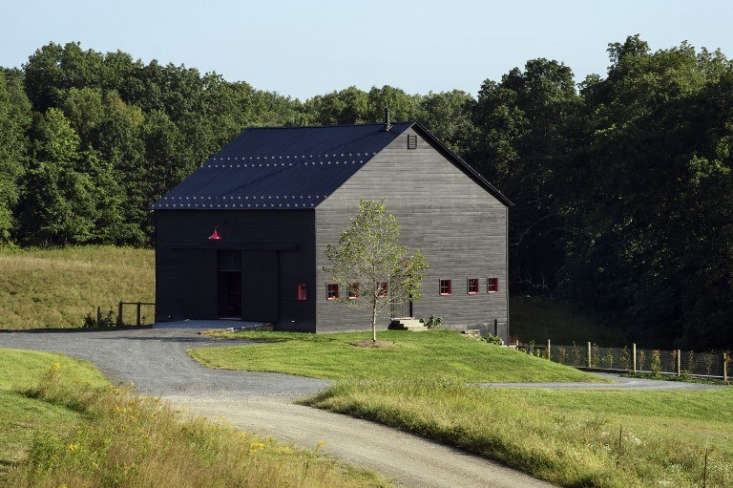When designing a garden for a client, I consider every piece in the puzzle: the homeowner, the location of the house, the architecture, the current landscape, the hardscape—and the driveway. While a driveway may seem like an unglamorous aspect of the overall design (on a par with say, drainage), a driveway actually is one of the most important elements in a landscape. Why? Not only is it used every day, but a driveway also is integral to creating curb appeal.
An attractive driveway will increase resale value if a homeowner ever wishes to sell—and in the meantime will welcome you home every day. When it comes to designing a driveway, one of the most important choices is the material underfoot (or in this case, under the wheels). Please keep reading to learn more about the most versatile paving materials and to figure out which is best for your driveway.
What are the best materials to pave a driveway?

The most common materials to pave a driveway are poured concrete, asphalt, pavers, and gravel. Which is right for you? Each material has pros and cons: All driveways age and deteriorate, and some show signs of needing a facelift sooner than others, depending on how harsh the elements are, how much use a driveway gets, and whether the job was done correctly in the first place. With that said, some pavement choices are better for certain climates, architectural styles, and budgets.
Always start your materials exploration by keeping your climate and your budget in mind. This will expedite your decision-making and keep you on track.
Poured Concrete

Concrete is made by mixing cement with various aggregates (sand, gravel, and rocks) with water and then allowing this mixture to cure. A favored sturdy and long-lasting material, concrete works well with most architectural styles because of its ability to be customized.
Concrete Driveways: Pros and Cons

Pros:
- Concrete is durable and easy to maintain.
- Decorative options are available for concrete, including staining and stamping.
- Concrete can be cheaper than stone pavers (but is more expensive than asphalt).
- Contemporary houses routinely have concrete driveways as a design element to unify the space.
- Strong geometric shapes can be formed and poured for a custom, modern look.
Cons:
- Concrete requires proper site preparation and framing before pouring.
- Concrete can be disturbed or cracked by nearby tree roots.
Asphalt

An asphalt driveway is a combination of aggregate (sand, stone, and gravel) mixed with liquid asphalt cement (a petroleum product). While the mixture is hot and unbelievably stinky, it is delivered to your home and applied to a sub-grade. Asphalt is a very common choice, especially in snowy regions where snow removal is required or in situations with a tight budget.
Asphalt Driveways: Pros and Cons
Pros:
- Asphalt is very economical.
- It is less susceptible than concrete to cracking from frost heaves.
- It makes snow removal easier.
- If damaged or worn, asphalt can be relayered.
Cons:
- Asphalt is a high-maintenance material because of its tendency to crack if not properly sealed.
- Needs to be routinely sealed, every three to five years.
Pavers

Pavers come in a variety of styles: cobblestone, brick, and precast concrete. Tip: Bricks are the least durable and cobblestones are the most durable. Concrete pavers can create a stronger driveway than poured concrete. If you want to create an old-world look, cobblestones are a good choice. However, if you own a brick home or already have brick walkways and patios, brick pavers will integrate better.

Pros:
- A variety of patterns, colors, and sizes of pavers are available.
- If one piece gets damaged it can be replaced individually, so you don’t have to repair an entire driveway.
- Concrete pavers are typically interlocking, which makes for speedy installation and a strong surface.
Cons:
- Cobblestones, in particular, make snow removal harder because of the unevenness.
- Pavers can be a pricier choice.
- Some patterns and designs can look dated over time.
- Disturbance from tree roots can be challenging to pavers.
Gravel

In general there are two types used: traditional gravel and crushed granite. Crushed granite is finer and more stable. In some areas—especially rural areas—traditional gravel driveways are economical and popular.
Gravel Driveways: Pros and Cons

Pros:
- A rainbow of different colors is available.
- Gravel requires minimal maintenance besides regrading and occasional weeding.
- Unlike solid materials such as asphalt or concrete, gravel (including decomposed granite) is more eco-friendly because its permeability encourages excess water to percolate back into the ground water supply.
- Gravel resists cracking or sinking.
- An option that is a more natural alternative to concrete and asphalt is to add a stabilizer to crushed granite to produce a more solid but still rustic surface. This additive is more expensive than loose crushed granite, but still less expensive than decorative concrete or pavers.
Cons:
- Scattered gravel can look messy and be a total nuisance.
- Additional gravel may be need as the material disperses or is removed by tires or water runoff, especially on slopes.
- Loose crushed granite also can be tracked indoors on shoes and can damage hardwood floors.
- If snow removal machinery is needed, some loose gravel may be removed during the process.
Is installing a driveway a DIY project?

Installing a driveway is best left to the pros, but you should be included in the design process. Doing research ahead of time regarding materials and finding reputable contractors is key. We hope the information provided here is a springboard to get you researching and designing.
If you’re embarking on a landscape projects, see our Hardscape 101 design guides, including Gravel 101. For more inspiration, see:
- Ask the Expert: 8 Ways to Add Pattern to a Landscape
- 10 Genius Garden Hacks with Concrete
- Hardscaping 101: Ribbon Driveways












Have a Question or Comment About This Post?
Join the conversation (1)